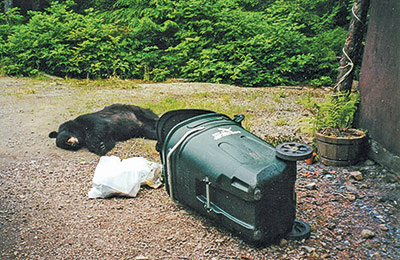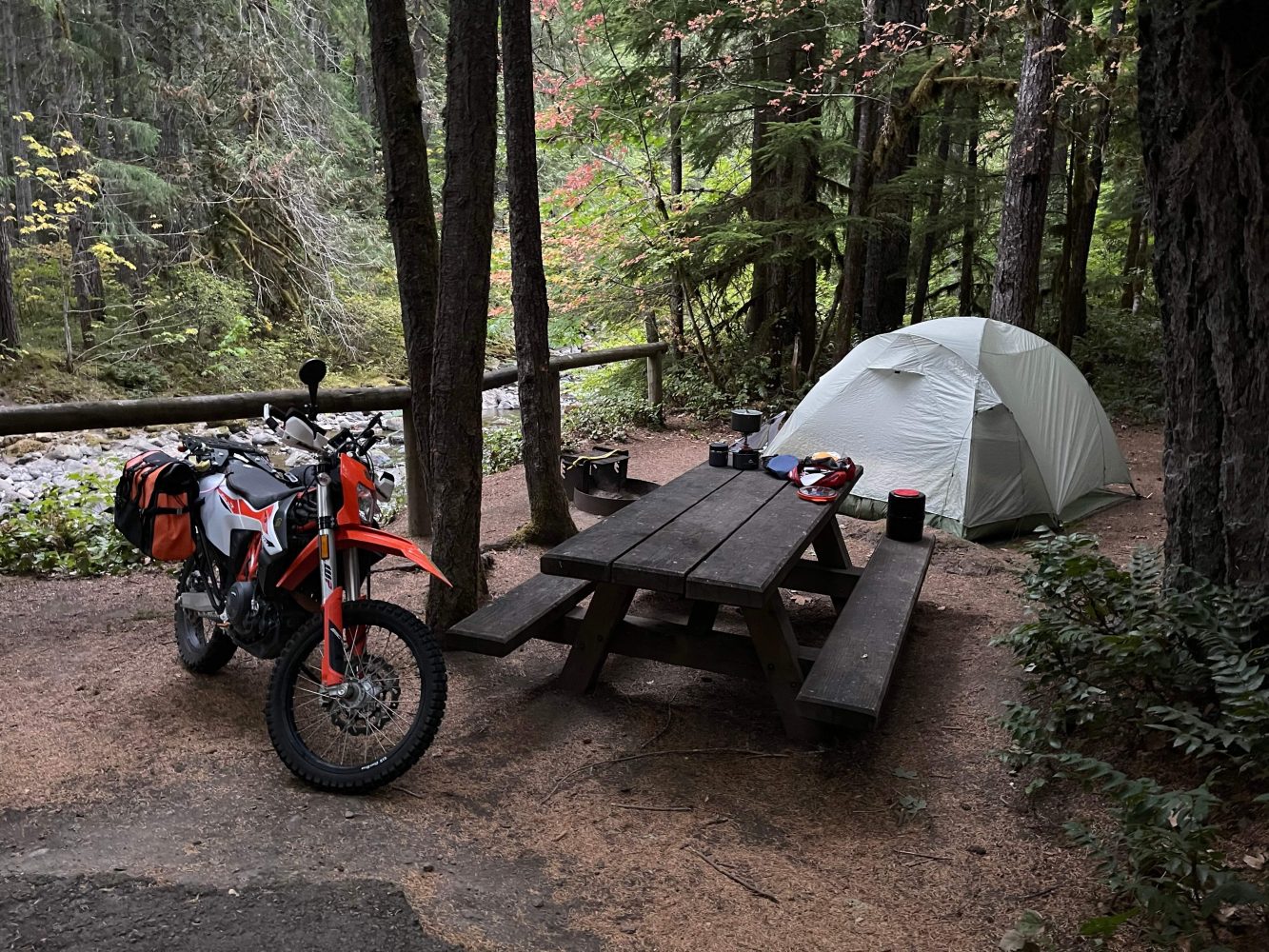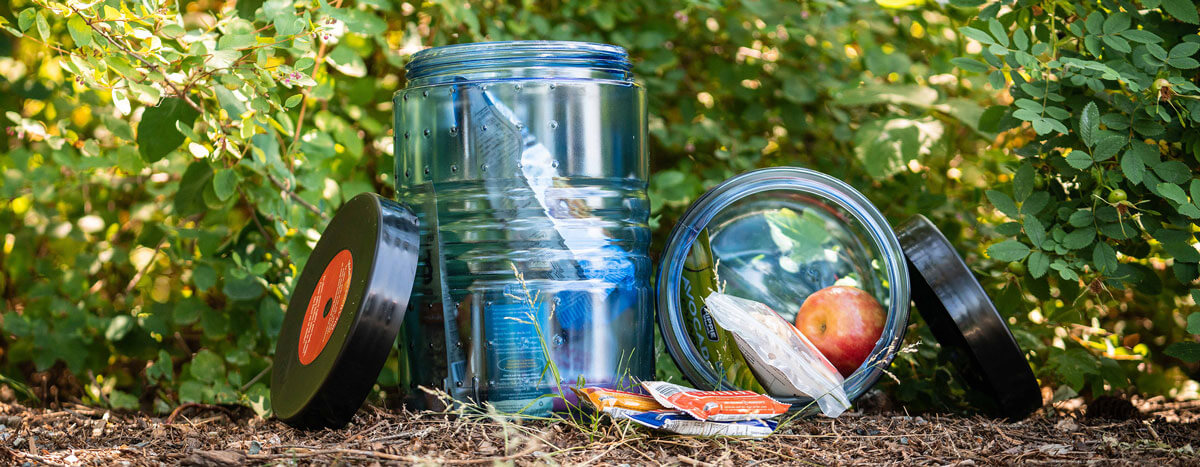As a rider, I’ve traveled through a lot of bear country, particularly in British Columbia, Alaska, and Russia. As a hiker, I’ve encountered dozens of bears—even been chased by one, which is why I take food storage in the wilderness seriously. Not only do I want to avoid being woken in the night by claws scratching at my tent, but I also want to protect wildlife.

Photo credit: Dave Sears
Unfortunately, it’s all too easy for bears to develop an appetite for human food. When that happens, they become problem or “garbage” bears, and the chances they’ll attack people to get to food increases dramatically. For that reason, these animals are usually shot dead by wildlife officers.

Photo credit: Alaska Fish and Game
For riding up north, I was looking for the best way to store food safely while riding a motorcycle and chose a BearVault.

Photo credit: Heather Lea
“Born from searching for a better way to protect bears,” BearVault originates from a Colorado-based family business that cares about “keeping wildlife wild and wild spaces natural.”
After reading about the testing process (real, live grizzly bears given all day to “break in”), I knew the canister would stand up to the beating it would take on my bike while riding up the Dempster and Dalton Highways in the Yukon and Alaska. I also knew I wouldn’t have access to tall trees. In these northern landscapes, if there are any trees at all, they’re about as tall as I am. Besides, most folks don’t sling food in a tree properly, and bears will almost always find a way to get to your stash. They’re excellent climbers.
I wanted something that could fit all my food and toiletries that would also stay intact, even if something got hold of it. The BearVault’s round design means it will continuously roll and is more or less “ungrippable” for anything without opposable thumbs. Its polycarbonate base can withstand crushing as well.
Below are the pros and cons I found while using the BearVault.
Pros
- Virtually indestructible: In 2003, BearVault designers tested their canisters with Fisher, a 560-pound black bear at the Folsom Zoo. Fisher played with the canister for 24 determined hours, but he gave up. Testers then took the canister to another bear named Sequoia, who also tried for one full day to crack the vault, to no avail. The company well-surpassed the certification requirement of one hour of crack-proof testing.
- No tools necessary to open: Because humans have thumbs and dexterity, the lid is easily opened when plastic tabs on the lid are pushed past tabs on the canister. No tools needed.

Photo credit: Heather Lea
- Decent volume: The large size (700 cubic inches) will hold up to seven days’ worth of food, though that’s debatable. See below.
- Other pros: Lightweight (2 pounds, 9 ounces), transparent, wide opening, easy to slip into soft-sided panniers or a backpack
Cons
- Too big? Riders don’t want extra weight and bulk, so the hard-sided BearVault might be a hard sell over something like a rope and a bag slung over a tree. But when there aren’t trees available, this may be your only option. I dedicated one soft-sided pannier to the vault, which slid easily inside.
- Not big enough? I was hard-pressed to put seven days’ worth of food for two inside the BearVault. Instead, I placed the most odorous items in the vault and stored what didn’t fit in my pannier far away from my sleeping space, hoping for the best. My advice would be to carry less and restock more often.
- Keeps bears away? Not exactly; bears will still be able to smell items in the vault—these animals are known to have the best sense of smell over any other animal on earth. The intention of the BearVault is to keep wildlife and critters from being able to access the food. Bears might play with the canister, but when they can’t get to the goods, they’ll move off in search of something easier to eat—which hopefully isn’t you wrapped inside your sleeping bag, burrito-style.

Photo credit: Jill Oliver
Many campgrounds and hiking trails require you to carry bear-proof food storage, so plan your next moto camping trip accordingly!
BearVault Cost:
Large (7 days): $93 | Small (4 days): $81 | bearvault.com
Our No Compromise Clause: We carefully screen all contributors to ensure they are independent and impartial. We never have and never will accept advertorial, and we do not allow advertising to influence our product or destination reviews.


